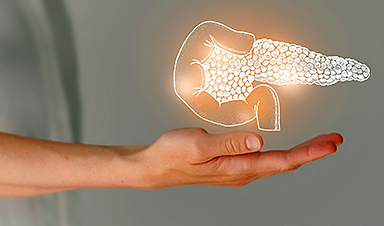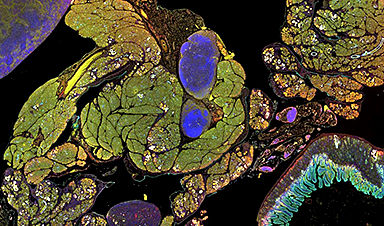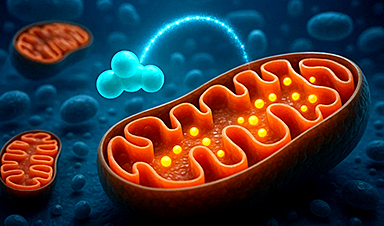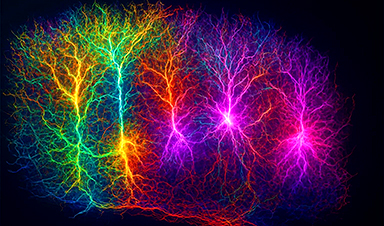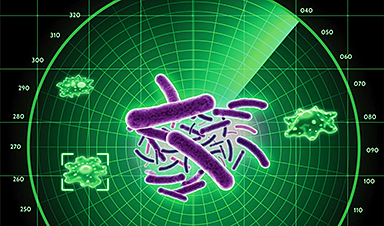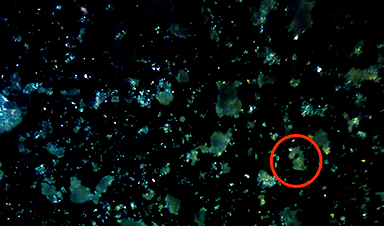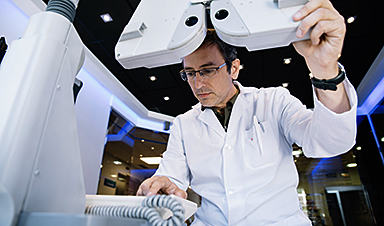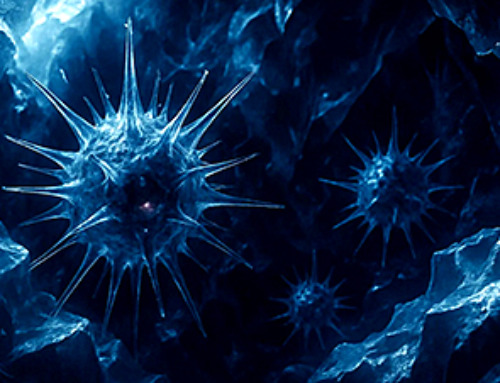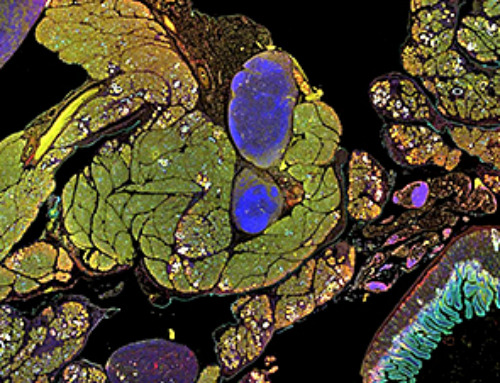Pancreatic cancer, a particularly lethal form of cancer and the fourth leading cause of cancer-related deaths in the western world, often remains undiagnosed until its advanced stages due to a lack of early symptoms.
Current treatments, like chemotherapies, have significant limitations, notably damaging healthy cells alongside tumor cells. However, recent advancements spearheaded by a collaboration between the Max Planck Institute for Multidisciplinary Sciences, University Medical Center Göttingen, and Karlsruhe Institute of Technology, focusing on the use of innovative nanoparticles.
Nanoparticle-Based Delivery of Chemotherapy
This novel approach utilizes nanoparticles for the precise delivery of the chemotherapy drug Gemcitabine directly to pancreatic tumor cells. Highlighting the potential of this method, Myrto Ischyropoulou, the lead author of the study, states: “Targeting the drug in high concentrations into the tumor cells with the help of the nanoparticles increases the efficacy and spares healthy cells. This can reduce the severe side effects that occur with Gemcitabine.” This targeted delivery system signifies a major advancement from the broader impact of conventional chemotherapy, which often adversely affects the patient’s overall health.
In preclinical trials, the nanoparticles have shown promise in transporting high quantities of Gemcitabine directly into the tumor cells of pancreatic cancer. The effectiveness of this method was confirmed using imaging techniques in mouse models, demonstrating that the nanoparticles specifically accumulate within the tumors. This targeted approach not only boosts the drug’s effectiveness against the tumor but also minimizes its harmful effects on healthy tissues.
Another advantage of this method is its potential to overcome the resistance mechanisms that tumors often develop against chemotherapy drugs. Claus Feldmann from KIT points out that free Gemcitabine is often ineffective due to the tumor’s resistance to drug uptake, but the nanoparticles introduce a different uptake mechanism in tumor cells, promising a more effective therapeutic approach.
The success of this research, illustrating the power of interdisciplinary collaboration, paves the way for further advances in the treatment of pancreatic cancer. The team is now working on optimizing this therapy for clinical application and transitioning the nanoparticles from the experimental phase to clinical use, facilitated by a spin-off company. This progression towards practical application not only signifies a leap in medical innovation but also mirrors the broader trends in the healthcare sector, particularly in oncology.
In the context of these developments, the pancreatic cancer treatment market is experiencing significant growth. According to Data Bridge Market Research, the market, which was valued at USD 2,236.17 million in 2021, is projected to expand to USD 6,245.81 million by 2029. This growth represents a Compound Annual Growth Rate (CAGR) of 13.70% during the forecast period from 2022 to 2029. Such growth is indicative of the increasing demand for more effective and targeted cancer treatments.
Conclusion
The development of nanoparticle-based chemotherapy for pancreatic cancer marks a pivotal shift towards more targeted and efficient cancer treatments. This breakthrough, poised to significantly reduce side effects and improve drug efficacy, aligns with the rapid growth and evolving dynamics of the cancer treatment market. As this technology progresses towards clinical application, it holds the promise of transforming the landscape of cancer therapy, offering new hope to patients battling one of the most challenging forms of cancer.
News
Studies detail high rates of long COVID among healthcare, dental workers
Researchers have estimated approximately 8% of Americas have ever experienced long COVID, or lasting symptoms, following an acute COVID-19 infection. Now two recent international studies suggest that the percentage is much higher among healthcare workers [...]
Melting Arctic Ice May Unleash Ancient Deadly Diseases, Scientists Warn
Melting Arctic ice increases human and animal interactions, raising the risk of infectious disease spread. Researchers urge early intervention and surveillance. Climate change is opening new pathways for the spread of infectious diseases such [...]
Scientists May Have Found a Secret Weapon To Stop Pancreatic Cancer Before It Starts
Researchers at Cold Spring Harbor Laboratory have found that blocking the FGFR2 and EGFR genes can stop early-stage pancreatic cancer from progressing, offering a promising path toward prevention. Pancreatic cancer is expected to become [...]
Breakthrough Drug Restores Vision: Researchers Successfully Reverse Retinal Damage
Blocking the PROX1 protein allowed KAIST researchers to regenerate damaged retinas and restore vision in mice. Vision is one of the most important human senses, yet more than 300 million people around the world are at [...]
Differentiating cancerous and healthy cells through motion analysis
Researchers from Tokyo Metropolitan University have found that the motion of unlabeled cells can be used to tell whether they are cancerous or healthy. They observed malignant fibrosarcoma cells and [...]
This Tiny Cellular Gate Could Be the Key to Curing Cancer – And Regrowing Hair
After more than five decades of mystery, scientists have finally unveiled the detailed structure and function of a long-theorized molecular machine in our mitochondria — the mitochondrial pyruvate carrier. This microscopic gatekeeper controls how [...]
Unlocking Vision’s Secrets: Researchers Reveal 3D Structure of Key Eye Protein
Researchers have uncovered the 3D structure of RBP3, a key protein in vision, revealing how it transports retinoids and fatty acids and how its dysfunction may lead to retinal diseases. Proteins play a critical [...]
5 Key Facts About Nanoplastics and How They Affect the Human Body
Nanoplastics are typically defined as plastic particles smaller than 1000 nanometers. These particles are increasingly being detected in human tissues: they can bypass biological barriers, accumulate in organs, and may influence health in ways [...]
Measles Is Back: Doctors Warn of Dangerous Surge Across the U.S.
Parents are encouraged to contact their pediatrician if their child has been exposed to measles or is showing symptoms. Pediatric infectious disease experts are emphasizing the critical importance of measles vaccination, as the highly [...]
AI at the Speed of Light: How Silicon Photonics Are Reinventing Hardware
A cutting-edge AI acceleration platform powered by light rather than electricity could revolutionize how AI is trained and deployed. Using photonic integrated circuits made from advanced III-V semiconductors, researchers have developed a system that vastly [...]
A Grain of Brain, 523 Million Synapses, Most Complicated Neuroscience Experiment Ever Attempted
A team of over 150 scientists has achieved what once seemed impossible: a complete wiring and activity map of a tiny section of a mammalian brain. This feat, part of the MICrONS Project, rivals [...]
The Secret “Radar” Bacteria Use To Outsmart Their Enemies
A chemical radar allows bacteria to sense and eliminate predators. Investigating how microorganisms communicate deepens our understanding of the complex ecological interactions that shape our environment is an area of key focus for the [...]
Psychologists explore ethical issues associated with human-AI relationships
It's becoming increasingly commonplace for people to develop intimate, long-term relationships with artificial intelligence (AI) technologies. At their extreme, people have "married" their AI companions in non-legally binding ceremonies, and at least two people [...]
When You Lose Weight, Where Does It Actually Go?
Most health professionals lack a clear understanding of how body fat is lost, often subscribing to misconceptions like fat converting to energy or muscle. The truth is, fat is actually broken down into carbon [...]
How Everyday Plastics Quietly Turn Into DNA-Damaging Nanoparticles
The same unique structure that makes plastic so versatile also makes it susceptible to breaking down into harmful micro- and nanoscale particles. The world is saturated with trillions of microscopic and nanoscopic plastic particles, some smaller [...]
AI Outperforms Physicians in Real-World Urgent Care Decisions, Study Finds
The study, conducted at the virtual urgent care clinic Cedars-Sinai Connect in LA, compared recommendations given in about 500 visits of adult patients with relatively common symptoms – respiratory, urinary, eye, vaginal and dental. [...]
